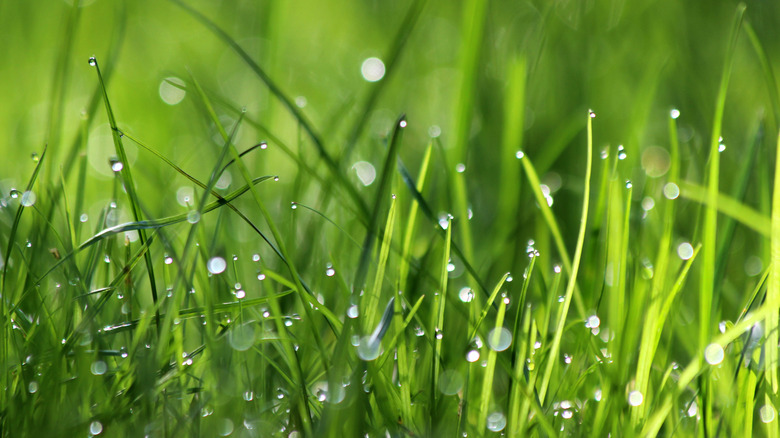It’s considered common knowledge in the landscaping industry that cutting wet grass is a big mistake. But the extent of the consequences of doing so isn’t as well-known. Grass takes on a different consistency when wet. It becomes difficult to walk on and even more challenging to landscape. These difficulties can create hazards for the lawn and the person cutting it and can cost homeowners a pretty penny when trying to fix the damages that cutting damp grass produces. Homeowners should ultimately refrain from mowing soaked lawns due to expensive and time-consuming issues that could arise with their landscaping equipment or with the grass.
Whether your yard experienced a torrential downpour or a thorough soaking caused by pre-installed sprinklers, a wet lawn can throw a monkey wrench in a homeowner’s plans to work outside. There are some scenarios where landscapers can make an exception to the unspoken rule. However, that depends on just how saturated the ground is. Here’s a breakdown of why you should refrain from cutting your grass when it’s wet, as well as how to determine when your lawn is finally dry enough to mow.
Disadvantages of cutting wet grass

One of the largest concerns of cutting wet grass is the potential damage it could cause to your lawn mower. Grass has a tendswhen mowed wet, which strains the machine’s engine, causing it to possibly overheat. These clumps can stick to your mower’s blades, and the excess weight slows the motor down and forces it to exert more effort to work at a normal capacity. Larger, commercial lawn mowers are less susceptible to damage than smaller and cheaper models on the market, but opting to use your mower on dry terrain alone could save you money and unnecessary hassle. Mowing wet grass is also dangerous for the homeowner, especially if operating a push mower. Slipping and falling while using this machine is always possible, even while wearing sneakers with a strong grip.
Mowing your lawn after it becomes wet can also have detrimental effects on your grass. Since the ground is softer after a rain or sprinkler shower, the tires of your mower are more likely to dig into your grass and cause rut damage, or gaping holes in your yard. Fixing rut damage can be expensive since the process usually involves laying down new seeds to replace the damaged grass. Cutting a moist lawn can also lead to fungal disease. But at the very least, mowing your lawn while it’s wet can result in an uneven cut, leading to your grass growing back unevenly.
When is grass safe to cut?
The amount of time it takes a lawn to dry varies, depending on how saturated the ground is and how much your particular breed of grass retains water. Usually, this takes a few hours, but weather, location, and other conditions outside a homeowner’s control can make this estimate longer. On chilly, overcast days, grass may take several days to dry. Always check the weather report for your area before making plans to complete yard work on any given week.
Homeowners should test the wetness of their lawn before deciding to break out the lawn mower. A simple stroll across a section of your yard can help determine if it’s ready for mowing. If pieces of grass end up stuck on your shoes, it’s likely the lawn isn’t dry enough for safe mowing. If sidewalks, driveways, or other gravel surfaces are visibly drenched, or the ground squishes when pressure is applied, it’s safe to assume you’ll be waiting at least a day or two before cutting your grass. In cases of emergency, mowing your lawn while it’s damp is occasionally acceptable, a prime example being when grass glistens from early morning dew. Take precautions before, during, and after using your mower on wet grass. Wear slip-resistant shoes while working, and wipe down your lawn mower’s blades and deck to remove any stuck clumps of grass once you’re finished.